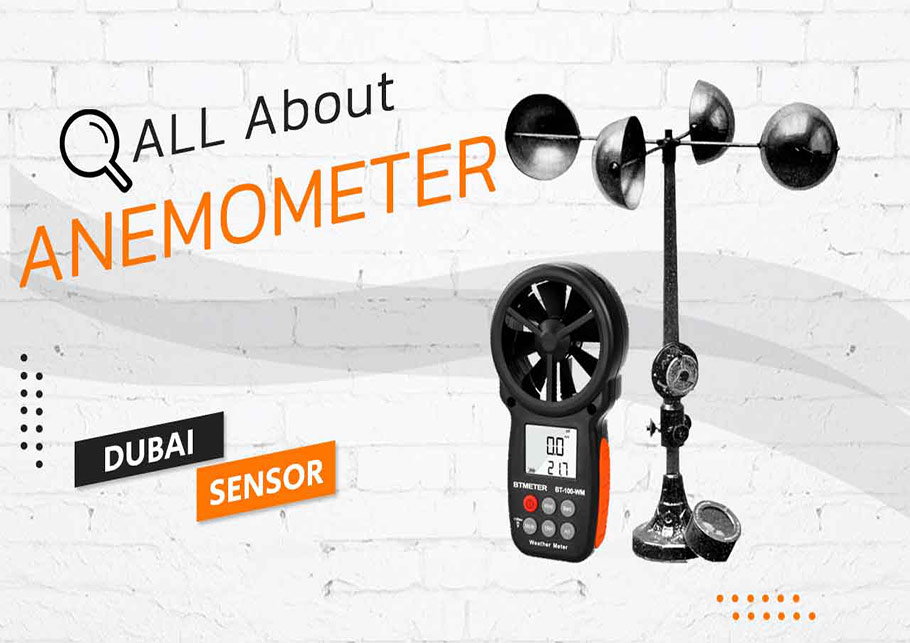How to Maintain and Care for Your Anemometer to Guarantee Durability
How to Maintain and Care for Your Anemometer to Guarantee Durability
Blog Article
Exploring the Functions and Advantages of Anemometers for Climate Fanatics and Professionals
Anemometers stand as crucial tools in the world of weather tracking, accommodating both fanatics and skilled experts alike. These devices offer a window right into the dynamic globe of wind patterns and rates, giving invaluable information for meteorological analysis and forecasting. From cup anemometers to sonic anemometers, each type brings its special set of applications and benefits, losing light on different facets of weather. As we delve right into the functions and benefits of anemometers, a much deeper understanding emerges not only of prevailing weather condition phenomena yet likewise of the more comprehensive ramifications for sectors like wind power production and environmental study.
Relevance of Anemometers in Weather Surveillance
Anemometers play a vital function in climate monitoring by offering exact measurements of wind speed, assisting in projecting and understanding climate patterns. These tools, ranging from traditional cup anemometers to modern ultrasonic anemometers, are necessary for meteorologists, scientists, and climate enthusiasts alike.

Sorts Of Anemometers and Their Applications
With the essential duty anemometers play in weather tracking and forecasting, understanding the various kinds of these tools and their applications ends up being essential for specialists and fanatics in the field. The most usual kinds of anemometers include cup anemometers, vane anemometers, hot-wire anemometers, and ultrasonic anemometers. Mug anemometers are composed of three or four mugs installed on horizontal arms that revolve with the wind, gauging its rate. Vane anemometers, on the various other hand, make use of an openly turning vane to align with the wind instructions, giving both wind speed and direction dimensions. Hot-wire anemometers operate based upon the principle of convective heat transfer, where the cooling result of the air circulation is measured to determine wind rate. Ultrasonic anemometers utilize ultrasonic sound waves to determine wind speed and instructions precisely.
Cup anemometers are appropriate and durable for basic climate monitoring, while vane anemometers are favored for directional measurements. Ultrasonic anemometers are non-intrusive and use high accuracy, often made use of in research and specialized weather condition tracking applications.
Benefits of Making Use Of Anemometers in Projecting
In meteorology, the use of anemometers offers vital advantages for improving the accuracy of climate projecting. Anemometers gauge wind rate and direction, offering important data for predicting weather patterns. By incorporating wind information right into forecasting models, meteorologists can much better recognize the motion of weather systems, anticipate adjustments in weather, and issue more specific forecasts.
Moreover, anemometers play a crucial duty in assessing possible weather condition risks. Keeping an eye on wind speeds aids forecasters anticipate severe climate events such as hurricanes, hurricanes, and winter season storms with higher precision. This very early warning system makes it possible for authorities to provide timely informs and carry out required precaution, reducing the risks to life and residential or commercial property.
In addition, anemometers aid in maximizing sustainable power production. see it here By examining wind patterns, meteorologists can identify appropriate areas for wind farms and anticipate power output, adding to the efficient generation of wind power.

Anemometers in Wind Energy Manufacturing
Given the essential role anemometers play in offering precise wind information for climate forecasting and risk evaluation, their significance encompasses the world of wind power manufacturing. Anemometers are essential tools in the field of wind energy, where the measurement of wind speed and direction is important for establishing the feasibility and efficiency of wind turbine installations. By accurately measuring wind speeds at varying elevations, anemometers aid maximize the positioning and style of wind generators to optimize power result.
In wind ranches, anemometers are purposefully put to gather real-time wind information that is made use of to assess the prospective power production of a website. This data is critical in figuring out the financial feasibility of wind energy projects and in forecasting power generation to make certain grid security. In addition, anemometers help in checking wind problems to enhance turbine efficiency, protect against damages from high winds, and guarantee the safety and security of employees functioning in the area of wind turbines.
Enhancing Climate Recognizing With Anemometers

Anemometers play a vital role in improving our understanding of microclimates. These local weather condition problems can differ dramatically from more comprehensive local projections, making it important to have exact information for certain locations. anemometer. By tactically putting anemometers in various areas, researchers can gather thorough details on exactly how wind behaves in various terrains, urban environments, or bodies of water
In addition, anemometers add to enhancing weather condition forecasting versions by providing real-time information click here for info on wind habits. This information is particularly beneficial for anticipating severe climate events, enhancing agricultural techniques, and sustaining sectors like air travel and maritime navigation. On the whole, anemometers are very useful tools that enable us to dig deeper right into the complexities of climate systems, eventually leading to even more accurate forecasts and better-informed choices.
Final Thought
In final thought, anemometers play a crucial role in weather condition tracking and projecting by gauging wind speed and direction. Anemometers likewise have applications in wind power manufacturing, more find here highlighting their significance in both meteorology and eco-friendly power sectors.
From cup anemometers to sonic anemometers, each type brings its special collection of benefits and applications, shedding light on various elements of climatic problems. These tools, varying from traditional cup anemometers to contemporary ultrasonic anemometers, are necessary for meteorologists, scientists, and climate enthusiasts alike. The most common types of anemometers include cup anemometers, vane anemometers, hot-wire anemometers, and ultrasonic anemometers. Mug anemometers are suitable and robust for basic climate monitoring, while vane anemometers are preferred for directional dimensions. Anemometers are essential tools in the area of wind power, where the dimension of wind rate and instructions is critical for determining the usefulness and performance of wind generator setups.
Report this page